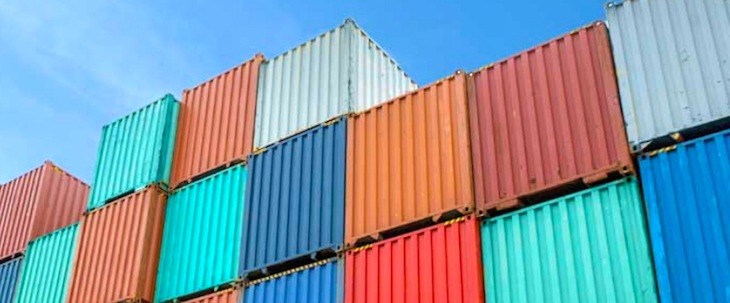Digital solution looks to reduce global logistics costs, issue was created to improve margins
by July 3, 2018 12:20 pm 503 views

The lack of capacity in the transportation sector is having a ripple effect across the entire supply chain as it works to keep everything going and costs rise worldwide, said Gary Barraco, director of global product marketing for logistics software provider Amber Road.
In a recent webinar, Barraco explained products are making a global trip and not for sightseeing. The webinar, “Taking the ‘Ouch’ out of Transportation Cost,” was hosted by Supply Chain Quarterly, which is published by Supply Chain Media, a joint venture between the Council of Supply Chain Management Professionals and Agile Business Media.
Ken O’Brien, chief operating officer of trade organization Gemini Shipper Group, said he understands what drives disruption for the 250 companies it represents in North America, and the ocean carrier network has been disrupted because of several factors. The connectors and lack of connectors between modes of transportation and the lack of understanding between these modes have led to rising costs and delays between modes.
In the era of big data, companies with too much information “can choke on it,” said O’Brien, adding that as the supply chain becomes more complex, more issues will arise. The issue isn’t necessarily transportation cost, he explained, but intermodal rates have risen, and container ports have experienced issues.
The ocean carrier industry has not been very profitable, and it’s not projected to be very profitable this year, O-Brien said. Until people understand the industry, they probably won’t be able to deal with it.
“Be very, very sure you know your carrier partners,” O-Brien said. “Take things in your own hands.”
Barraco said the supply chain has shifted to becoming more global, and the issue is one the world brought on itself in order to improve margins. Carrier consolidation has led to container shipment issues, and the cost to ship goods from Asia to Europe has risen 16% over the past year, he said.
Solutions to the issue include improving visibility, collaborating with carriers and automating and managing final mile delivery, said Vin Ramundo, solutions consultant for Amber Road. The solutions don’t necessarily relate to technology but to best practices, Barraco said. Other impacts on the global supply chain include natural disasters, trade wars and civil unrest and terrorism.
“We’ve globalized the supply chain,” Barraco said. “Now we’re going to build walls around them.”
But to improve visibility using technology will allow companies to see across multiple modes of transportation and to understand when goods are available, said Ramundo adding that capacity constraints aren’t expected to go away.
Ramundo explained the issue of sourcing goods and the logistics of getting it to a destination. Overseas, a screw might cost 10 cents, but the same screw might be 15 cents in the United States. However, after shipping and regulations costs, such as tariffs, the screw shipped from overseas actually costs 20 cents.
Ramundo and Barraco said the benefit of a digital supply chain will allow for a single view of the supply chain and the ability to act on it. It’s important to understand surcharges, tariffs and taxes throughout the supply chain, instead of being in their own silos. Access to existing trade regulations will improve decision making and the ability to stay current on them is difficult, Barraco said.
But it’s better if one knows about new regulations sooner to prevent disruption in the supply chain, Ramundo said.
Manufacturers that have good relationships with suppliers are going to be called on more, and shippers that don’t tie up a carrier’s equipment in their yards are going to be a better customer, Barraco said. Transportation costs rise when they leave the port, and estimated times of arrival are important for trucking companies awaiting shipments in ports.
Diesel has risen to a three-year high, a limited number of trucks and the electronic logging device mandate have contributed to a capacity shortage, Barraco said. Trucking rates for fresh produce have risen as much as $1,000 per shipment, and there’s no surplus of temperature-controlled trucks.
The supply chain is becoming more complex, with trans loading and cross docking, and tracking items is more than following a container, it’s how goods are moving through the supply chain, Ramundo said. Companies are becoming more creative with final mile deliveries, but as they do, these shipments become more difficult to track.
With multiple modes of distribution, determining the cost to use all the modes is available in one platform, such as the one Amber Road offers, Barraco said. Traffis might change after July 6, and it keeps up to date on existing regulations. It compiles information for over 150 countries worldwide, Ramundo said.
Companies can no longer depend on “tribal knowledge,” but need global trade management solutions to allow for full control of the supply chain and to mitigate risk, Barraco said. If companies change their information to a digital format now, it will allow for much easier transition in the future to technology such as blockchain.
In a question-and-answer session, Barraco said some companies such as Lowe’s and Home Depot use weather data in their logistics planning. The companies might need to move shipments of building materials to stores in areas that recently experienced a natural disaster.
